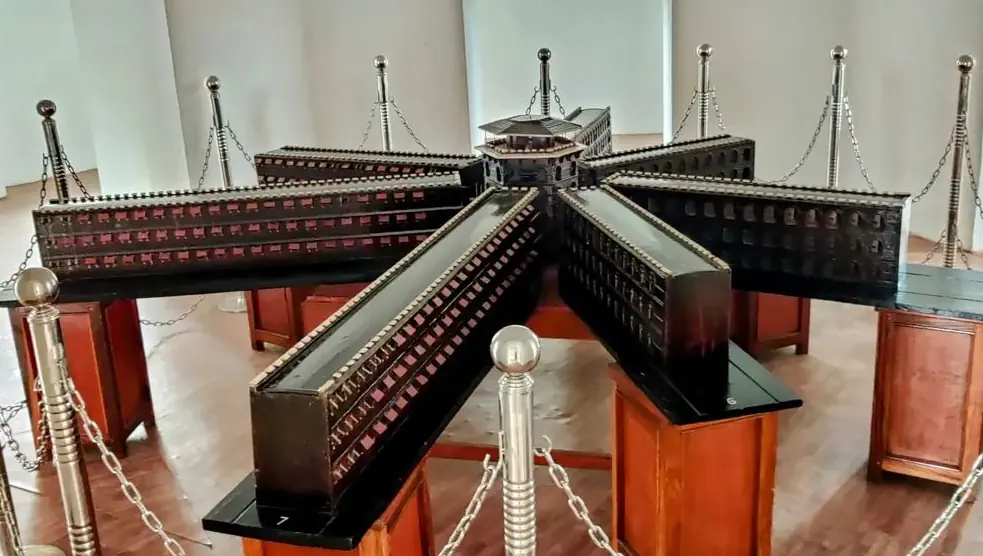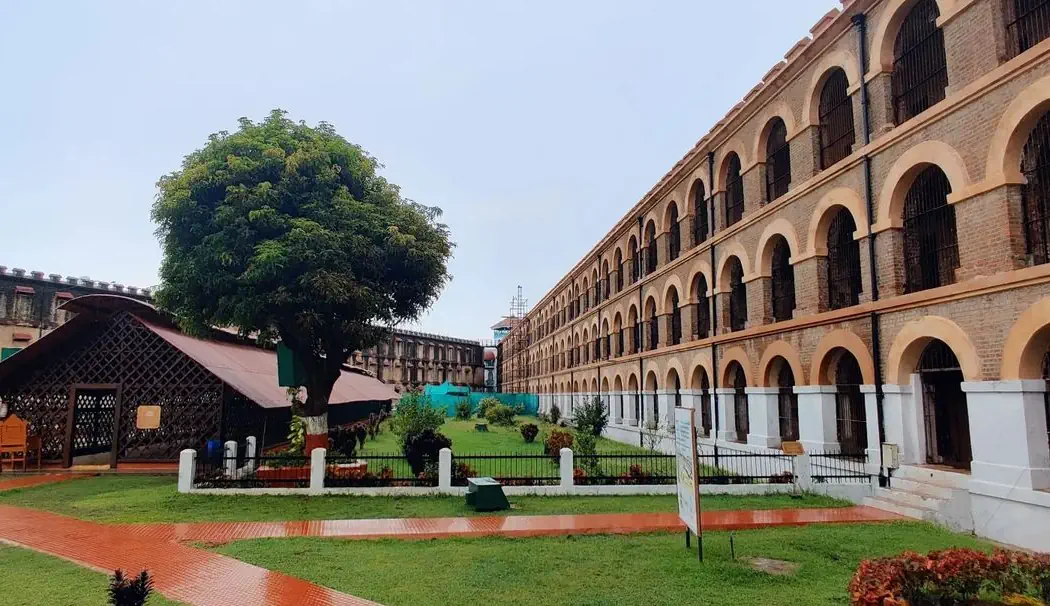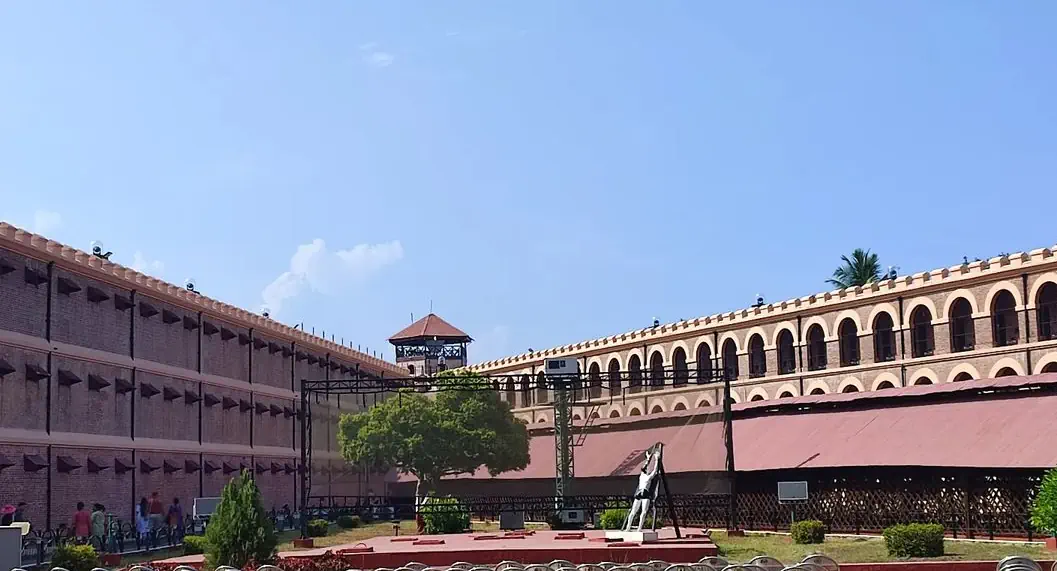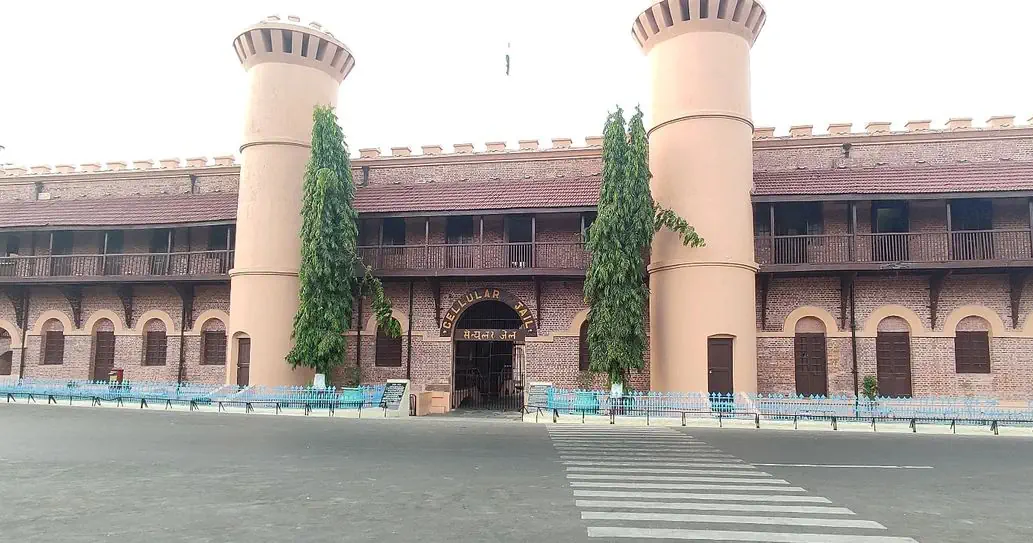Cellular Jail [Kalapani Jail] – Andaman Islands
The Cellular Jail is a National memorial situated at the northeast corner of Port Blair city. Shri Morarji Desai (Former Prime Minister of India) declared the Cellular Jail a national memorial on 11th February 1979. The building is a testimony of the atrocities borne by the Indian revolutionaries. For fellow Indians the Cellular Jail is still known as Kala Pani which translated to Hindi/Bangla/Punjabi means Black Water or Death Water. A Visit to the Jail evokes a mixed emotions of both fear and respect. Each prisoner was isolated and held in a separate cell to ensure absolutely no communication among them. The jail was built as a 3 Storey building having seven wings connected with a central tower. The seven wings and the tower ¡n the middle were connected in the shape of a starfish. The building contained a total of 698 cells. Presently only 3 out of 7 wings are remaining.
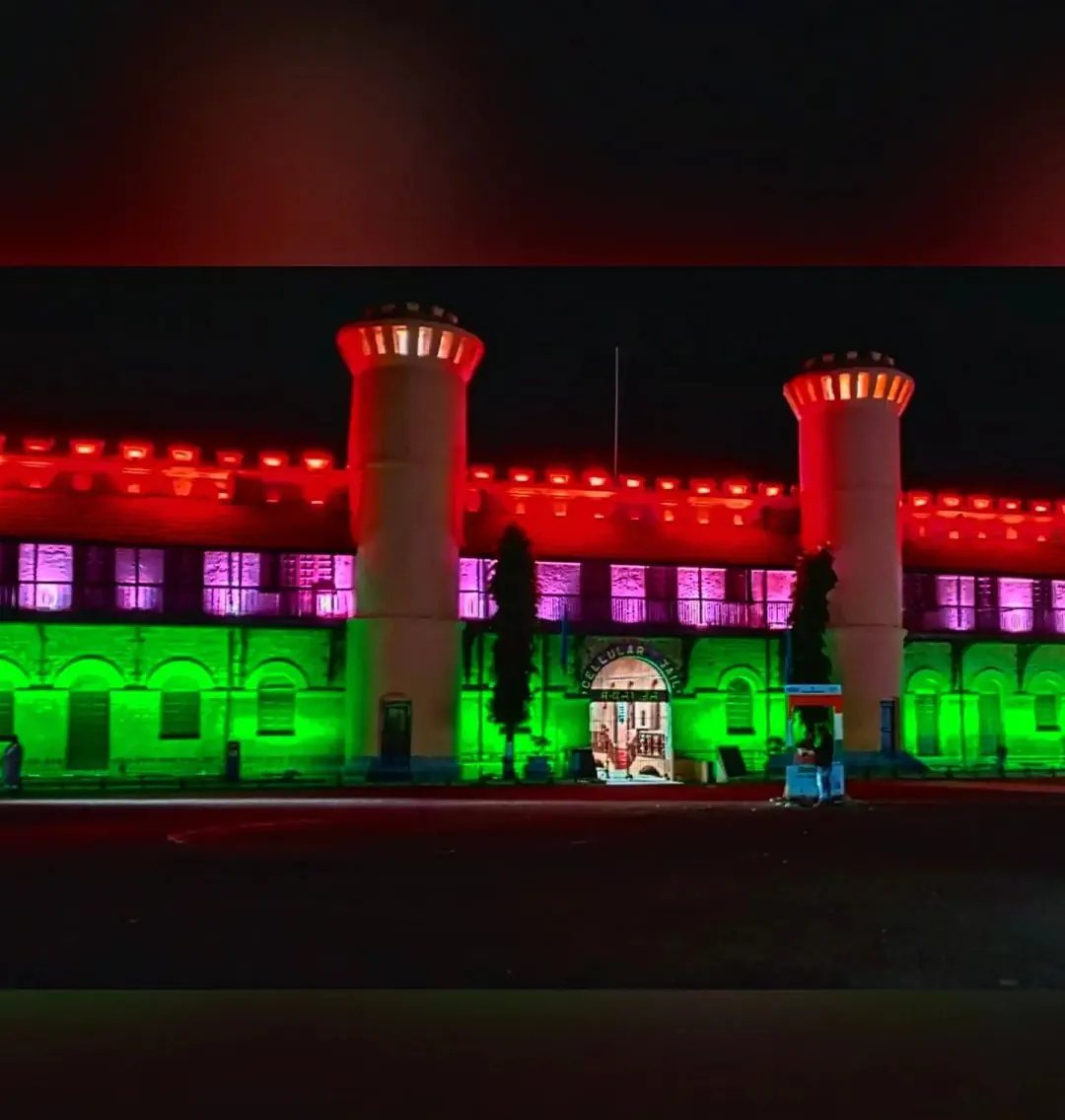
History of Cellular Jail:
The British administration started the construction following order no. 423, dated 30th December 1896 from Colonel N. S .T Ford. The jail was mainly built for a capacity of 600 convicts. The estimated cost of the building in those days was 5,17052 Rupees including all costs of man and material. The jail was completed by 1906. Some 600 convict workers worked day and night to accomplish the work of construction of the jail. The cellular jail had 698 isolated cells. Each cell measuring 13 and a half feet long and 7 feet wide was occupied by only 1 convict. Each cell had a ventilator of 3 feet in length and 1 foot wide, the ventilator is about 10 feet above the floor level of the cells.
Reason for building the Cellular Jail:
The first War of Indian Independence (The British version – ‘The Sepoy Mutiny’) which started in 1857 is known to every Indian. The first batch of freedom fighters (outcome of the Sepoy mutiny) arrived in Andaman. On 10th March 1858, Superintendent J. B. Walker arrived with a batch of 200 freedom fighters. The second batch of 733 freedom fighter prisoners arrived in April 1868 from Karachi (now in Pakistan), all convicted for life. The cellular Jail was thus made as a penal settlement for the freedom fighters from the mainland.
The Jail then was surrounded by swamps and dense forest, negating all the convicts’ escape possibilities. The entire atmosphere in it is frightening and well-guarded interiors are proof of the atrocities of innumerable convicts. The verandahs facing the cells were fully covered by iron-grilled doors. Totally isolated cells of the Jail made life unbearable due to periodic inhuman tortures in addition.
Cellular Jail as a National Memorial dedicated to the freedom fighters:
Only 3 wings out of 7 wings of the building now are remaining. The place once occupied by 4 wings of the Jail is now occupied by G.B. Pant Hospital (The only tertiary hospital of these Islands). The cellular jail has been declared a protected national monument by the government of India. The various plaques and Light & Sound shows commemorate the various occupants of these dreadful cells. It is to pay homage to the men and women (All of their names are not even known) who had sacrificed all for the nation’s destiny.
Read:
Best Places to Visit in Andaman
Cellular Jail Photos:

